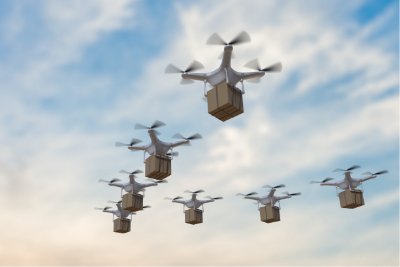Building a Brighter Future with Robotics

From exploring shipwrecks to air-dropping supplies in a pandemic, U of M faculty and students are designing robots for the 21st century.
Safe robots
As drones handle more pickups and deliveries, especially in high-traffic areas, the specter of collisions and “mission failure” grows. But drones aren’t cheap, and some payloads are priceless. To build reliable drones, researchers like Derya Aksaray—who with her students implements algorithms on real robots—first provide “proof of concept.”
“We developed a priority-based planning algorithm to ensure collision avoidance among drones,” says Aksaray, an assistant professor of aerospace engineering and mechanics.
“For example, if two drones have pickups at the same location, the drone closer to its mission completion gets higher priority. Robots would start communicating when they get close and can see each other via cameras.
“We can make robots avoid collisions and complete their missions on time or within a tolerable delay. We’re collaborating with Honeywell on safe autonomy and getting industrial feedback.”
Also for robots flying solo, say, doing a survey of a farm field, Aksaray uses reinforcements—rewards—to get them to focus on areas that require more attention.
“Suppose a drone explores, trying to find issues [like poor crop growth],” she explains. “At first it tries a certain trajectory and spends one minute in each location. Back at base station, humans could look at the coordinates of the various locations explored and reward interesting ones [that need attention] with points.”
Next, says Aksaray, the drone would start again, this time apportioning its time according to how many points each location earned.
In these and related projects, Aksaray has one goal: “I’m interested in developing provably correct algorithms that don’t just work, but can be counted on to work all the time.”
Read the full article at z.umn.edu/61e8